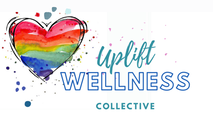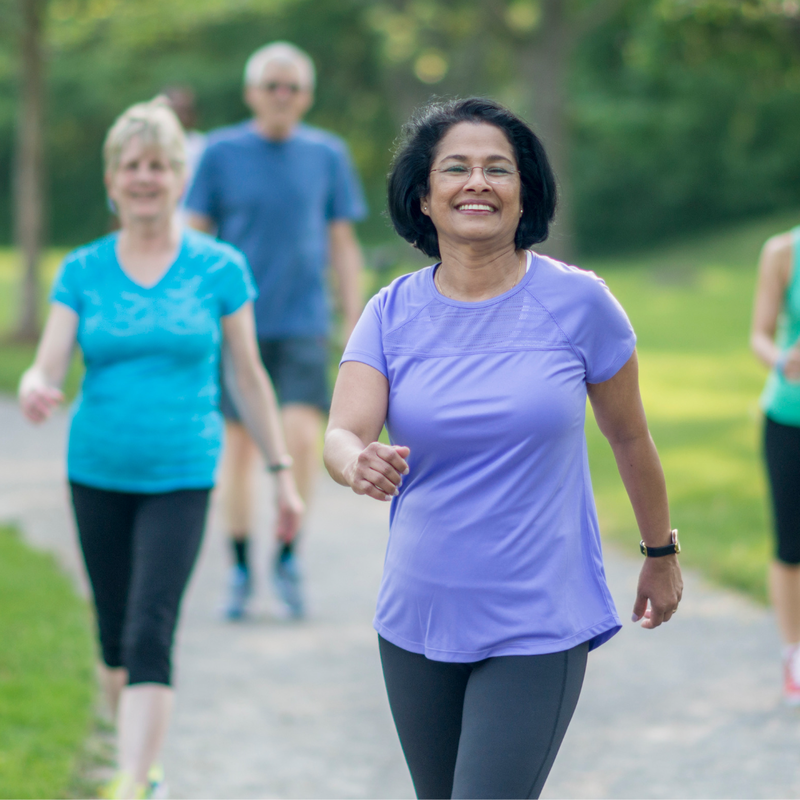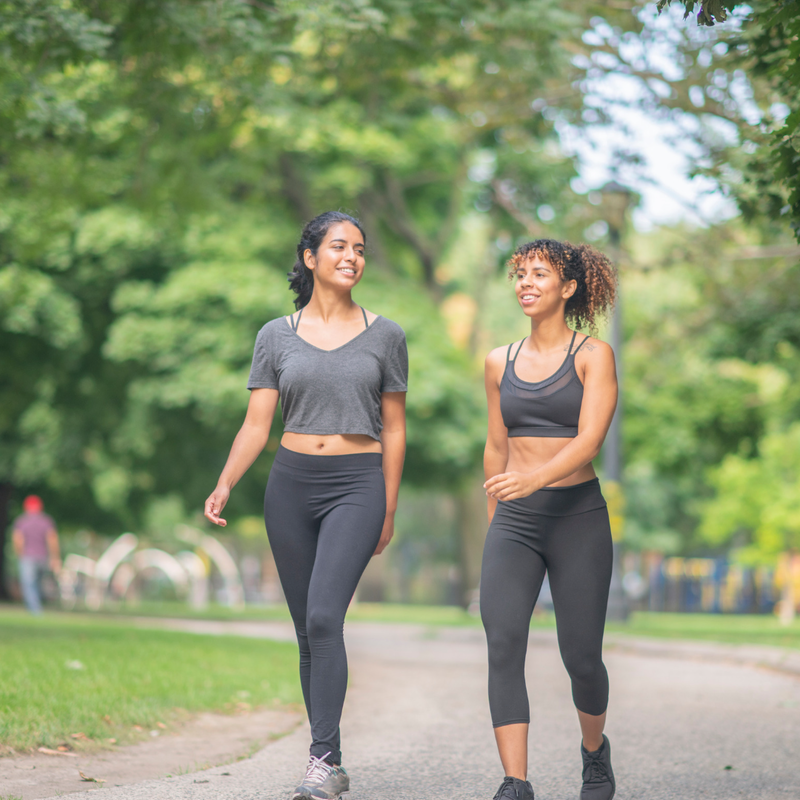|
5/15/2023 Pilates for well-beingDo Pilates. It’s a twofer! Strengthen your body AND your mind. Contrology, now Pilates, was initially designed by Joseph Pilates to improve physical and mental health. Over the years, both anecdotal evidence and research have borne this out. Regular practice promotes strong, healthy bodies with balanced flexibility, strength, and muscle tone. You can achieve a flexible spine and a strong core. Improve your flexibility, dynamic balance, and muscular endurance. And, as you get older, you can benefit from relief for back pain, fall prevention, and overall quality of life and physical fitness (Fleming & Herring, 2018). Practitioners of Pilates are aware of its many benefits. Having experienced the method firsthand, practitioners provide ample anecdotal evidence of its impact on improved physical outcomes. They report feeling “taller,” more “flexible,” or “bendable,” “stronger,” “leaner,” and “energized”-- just to name a few. Indeed, Joseph Pilates stated, “In 10 sessions, you’ll feel the difference; in 20, you’ll see the difference; and in 30, you’ll have a new body.” Start practicing Pilates for a stronger body today. Pilates also improves mental health outcomes. People who practice regularly experience increased feelings of energy, self-efficacy, and overall mood. They may also have enhanced self-concept and sleep quality while experiencing decreased anxiety symptoms and fatigue. We realize these benefits by participating in an activity incorporating mindfulness and visualization. What ARE mindfulness and mindful movement? Mindfulness involves paying attention to the present moment without judgment or distraction. By focusing on your breathing, body movements, and thoughts, you can learn to stay present and avoid preoccupation with worries or negative emotions. Incorporating mindful movement into your daily routine can support your wellness. Research shows that it nurtures the mental health of healthy adults and those with anxiety and depression (Fleming & Herring, 2018). Mindful movement has been demonstrated to promote positive affect, attentiveness, vitality, and emotion while decreasing anxiety and depression (Tihanyi, Sagi, Csala, Tolnai, & Koteles,2016). How does visualization support mindful movement? Pilates teachers enhance your practice by using visualization to help you stay present and focused on your breath and body. Visualization involves using your imagination to create positive mental images, allowing you to feel more relaxed and confident as you become attuned to your body and develop an increased awareness of your body moving in space. The mindful movement component was highly regarded in a recent well-being program incorporating Pilates. Program members were people like you and me. They were teachers and parents and men and women. They cared for others while caring for themselves. They expressed some degree of overwhelm by balancing life’s many demands, especially those presented by COVID. They were former, current, and aspiring exercisers. They enjoyed doing Pilates. They liked exploring something new. Pilates made the members feel successful. Pilates helped relieve stress and increase personal feelings of strength and confidence. Members' reports of benefits from the program reflect the research and widely known benefits of Pilates. What are they saying? How did Pilates impact them? Some of the big ideas expressed by the program participants include the following:
Joseph Pilates said, “The Pilates method of body conditioning is complete coordination of body, mind, and spirit.” Wait a minute, friends, it's a “threefer”! Are you ready to explore all Pilates offers for your body, mind, and spirit? Subscribe below to receive access to Uplift Pilates and Wellness’ Introduction to Pilates Series. Explore three videos to learn Pilates fundamentals and complete a beginner mat class.  What if we could savor a compliment as well as we could savor a good bowl of ice cream, a piece of Godiva chocolate, or a ripe strawberry? When you receive praise—whether about your new outfit or an accomplishment at work- do you deflect it? Or do you savor it? To increase our well-being, we should get better at this. Here is why. We need to be able to celebrate ourselves to truly flourish. Accomplishment is one of the five elements of human flourishing, as outlined in Martin Seligman's well-being theory (PERMA). Feeling a sense of accomplishment contributes to developing positive well-being over time. The research contributes to this understanding. For example, developing achievement, a strong sense of purpose, and persistence help us improve at school and work. We are less likely to give up on tasks when we are confident that we have the necessary skills to be successful. Aligning a task to our sense of purpose increases our likelihood of completing it. Working towards a goal, especially one with personal value, and mastering an endeavor can give one a sense of accomplishment. These achievements can contribute to our well-being when we actively savor our successes and the acknowledgments we receive from others. Unfortunately, most of us could be better at acknowledging our accomplishments AND enjoying praise from others. In general, we tend toward the self-critical rather than the self-compassionate, toward negative self-talk rather than positive self-talk. Research indicates that when we are kind to ourselves, we feel more confident and view ourselves more positively. People who are kind to themselves, including acknowledging and receiving praise for their accomplishments, have increased motivation and improved productivity, relationships, and physical health. They are flourishing.  One way to be kinder to ourselves and increase our well-being is to get better at receiving kudos, compliments, and praise so that we may savor our achievements. Like everything else, it is easier to do with a plan and practice. Here's how to do it—four easy steps. 1. Thank the person for noticing. 2. Appreciate their attention and intention. 3. Look for good quality in the other person and return the compliment. 4. Take the acknowledgment you are given as an opportunity to be grateful to your teachers. (Shetty, 2020). Thank the person for noticing. Appreciate their attention and intention. Making this a regular practice helps us to train our brains to shift to a positive mindset and overall improved well-being. Expressing gratitude leads to lasting changes in the brain's prefrontal cortex, known for attention, memory, and self-regulation. Look for a good quality in the other person and return the compliment. Turnabout is not only fair play but also good practice! Help nurture someone else's well-being by noticing one of their strengths or helpful contributions. Every time you give a compliment or share praise, it lights up the same area of the brain as when one receives cash—the reward system! Our brains are pre-wired to focus on the negative; giving and receiving compliments or praise creates the opportunity to retrain the brain to think more positively, which reduces stress and burnout. Take the acknowledgment you are given as an opportunity to be grateful to your teachers. This is an opportunity for you to reflect upon your strengths. What was your achievement? What went well? What allowed you to be successful? Who helped you to learn these skills? When we feel grateful, our brains release dopamine, a reward chemical that makes us want to feel that way again. This promotes gratitude as a habit. You are setting up the brain, a pattern-seeking device, to keep looking for things to be grateful for. Learn more about promoting your well-being overall and gratitude specifically by reading: Jay Shetty’s Think Like a Monk: Train Your Mind for Peace and Purpose Every Day, 2020., and Martin Seligman’s Flourish: A Visionary New Understanding of Happiness and Well-being, (2011).
 A lot of stress
How stressed are you? And how do you know it? How do you feel it? The impact of stress Stress is a natural part of the human experience; we all feel it. It is our reaction to the various experiences and events of daily living. Stress can include anything from everyday school, family, and work obligations to serious life events such as conflict on the job, the death of a family member, or one’s own significant illness. Some stress can be positive and healthful, providing one with the bolster they need to cope with potentially challenging situations. Ultimately, stress's long-term consequences are contingent upon one’s perception of and reaction to events. Stress, therefore, is in the eye of the beholder. When one perceives a situation or event as being outside their coping abilities, frustration, overwhelm, and demotivation can set in (Matthews, 2019). When one is in this state of distress, stress hormones keep firing. Your nervous system releases a flood of stress hormones, including adrenaline and cortisol, which activate the body for emergency action. When stress levels remain elevated, your body is significantly impacted. Chronic stress affects your immune system, sleep, and ability to heal. Some other common symptoms include:
Walking away stress Hippocrates encouraged us, “If you are in a bad mood, go for a walk. If you are still in a bad mood, go for another walk.” Walking can help to decrease our stress and boost our mood. Research and neuroscience provide strong reasoning for us to lace up and hit the sidewalks or trails. Whether you trot a quick urban pace passing your fellow city dwellers, stroll on the sidewalk of your suburbs offering greetings to neighbors and petting dogs, or meander along a wooded path, stopping to smell a flower here and there, walking has potential benefits for you. Walking it off works. It can help to relieve stress--even a short, ten-minute jaunt can improve mood. Research showed these short walks as effective as a similar brief meditation session. In fact, walking is sometimes considered “meditation in motion” as one shifts to concentrating only on their body’s movements rather than ruminating on daily worries. Research indicates that shedding tensions through walking can result in energy and optimism; the resulting sense of calm and focus is carried forward in other endeavors. Of course, one can also engage in purposeful mindful meditation while walking. This might include listening to guided meditations, such as those provided on the Calm app, supporting one to establish new mental patterns and avenues for growth and change. Change your brain. Walking can build brain health by improving memory, learning, and concentration. It creates brain-derived neurotrophic factor (BDNF), which Dr. Mark Hyman calls “miracle grow” for the brain. When you walk, your brain becomes more elastic. Like other physical activities, walking helps increase the production of endorphins, your brain’s feel-good neurotransmitters. You improve your mood, boost your energy and reduce overall stress in your body and mind (Mayo Clinic, 2022). Gain control. Walking has both psychological and physiological benefits. Done routinely, it can increase self-confidence, improve mood, support relaxation, and lower symptoms of mild depression and anxiety. It can also improve sleep. Lower your stress levels by walking and increase your command over your body and life. Give it a try! Get more walking into your daily routine with one or more of the following suggestions. While one may begin experiencing benefits with 10-minute walks, 150 minutes of moderate weekly exercise is suggested (OASH, 2021). You could start building toward five 30-minute walks per week.:
How do you embed walking into your daily routine? We would love to hear about your walking strategies and successes. Email us to connect and share. We look forward to it! 4/3/2023 Optimism is a mindset. Grow it! What is optimism, really? Optimism is a mindset of hopefulness and confidence about the future and is a construct that often gets misconstrued. It is frequently mistaken as thinking ALL the time positively, but this is not true. Optimism is NOT toxic positivity or the obsession with positive thinking. People with this belief look to put a positive spin on all experiences, even those that may be highly stressful or profoundly tragic. Toxic positivity can silence negative emotions, which must be experienced as part of the total human experience. It can also demean grief and/or pressure people to feign happiness despite their feelings and circumstances. Dr. Martin Seligman defines optimism as responding to problems with a sense of confidence and high personal ability. Fortunately, optimism exists on a continuum and is a learnable skill. As we learn to increase our optimism, we benefit as it serves as a protective factor against depression and several serious medical issues. Research indicates that optimistic people deliver healthier babies than their less optimistic peers, have better sleep quality, and have better immune system function. Optimistic individuals have increased life satisfaction and self-esteem. In fact, a recent study followed 70,000 women for eight years finding that those who were optimistic were much healthier; they had a considerably lower risk of dying from a number of significant causes of death, including heart disease, stroke, cancer, infection, and respiratory diseases. People with optimistic mindsets had improved quality of life, energy levels, better psychological and physical health, faster recovery from injury or illness, and fewer colds. But the world around us can sometimes be negative and challenging. How do we stay positive? Uplifted? Optimistic? Follow these hree steps toward a more optimistic you: 1. Be curious, and be a learner. Charlie Mackesy, author of “The Boy, the Mole, the Fox, and the Horse,” includes a theme of optimism in his story. Explore this delightful book for opportunities to read and reflect on the nature of optimism and enhanced well-being. “This storm will pass,” the author writes above, a drawing depicting the boy and his animal friends huddled amidst a menacing storm. Optimistic people believe that adverse events are temporary, limited in scope, and manageable. By limited scope, we mean one does not expect adverse events to permeate every aspect of a person's life. “The greatest illusion,” said the mole, “Is that life should be perfect.” Optimism understands that one does not have to think all the time positively. One knows that life is rich with a wide range of experiences, including challenges and uplifting ones. “One of our greatest freedoms,” explains the mole to the boy, “Is how we react to things.” Research indicates that we can influence our ability to regulate our feelings, thoughts, and behavior under stress simply by shifting the way we talk to ourselves. Are you kind to others but critical of yourself? Negative self-talk creates a negative opinion of oneself, influencing our feelings, thoughts, and behavior. Reframing our negative self-talk with positive messages takes time and practice. It is like creating a new blueprint for how you relate to yourself. It takes some work, but well worth it. Examples of positive self-talk include the following.
2. Surround yourself with positive people. Both negativity and positivity are contagious. Which one do you want more of? So, consider the people with whom you spend most of your time. Surround yourself with people who are positive whenever you can. Research shows it will improve your self-esteem and increase your chances of reaching your goals. Choose people who will lift you, not drag you down. Choose people who will shine a light on the bright side of things, not emphasize the problems and the pitfalls. Find or create your high-frequency tribe. 3. Practice gratitude. Research shows that practicing gratitude reduces stress, improves self-esteem, and nurtures resilience even in tough times. Writing down the things you are grateful for can improve your optimism and overall sense of well-being. Write notes of gratitude or keep a gratitude journal. Think of people or experiences that bring comfort or happiness and express your appreciation to them in a handwritten note, and/or write about them in your gratitude journal. On difficult days, jot down a list of things you are grateful for. Deliver your handwritten gratitude notes to the intended recipients while also sharing your message verbally. Select a strategy and do it consistently. Develop a habit through regular practice and build your gratitude muscle. Follow the advice of Michael J. Fox, actor, and advocate: “And if you don’t think you have anything to be grateful for, keep looking. Because you don’t just receive optimism. You can’t wait for things to be great and then be grateful for that. You’ve got to behave in a way that promotes that.” Michael J. Fox also says, "With gratitude, optimism is sustainable." Remember, optimism is a mindset. Let's grow it! Explore Charlie Mackesy's work here Learn more about Michael J. Fox's reflections on his 30th anniversary with Parkinson's disease here Share your email (Subscribe) below to receive helpful information and tips on positive self-talk. We promise not to send junk mail. We will send occasional emails when we update or create an awesome resource to share!  Have you read it? Seen it? Heard about it? It’s a Barnes and Nobles Book of the Year illustrated novel and an Academy Award-winning short film. Still, most importantly, it is a beautifully illustrated story about friendship and a boy learning life lessons from a group of animals. Before—and after—the hoopla of awards and recognition, this is a powerful story of friendship that serves as a springboard for conversations about well-being. Whether you are an adult or a child, there are valuable opportunities to begin or extend your thinking about well-being concepts such as kindness, optimism, and gratitude. What is well-being literacy? The intentional use of well-being-relevant vocabularies, knowledge, and language skills, such as kindness, optimism, and gratitude, to improve the well-being of oneself, others, and the world is coined well-being literacy. One of the reasons this story is so powerful is because it discusses well-being concepts that matter so clearly and delightfully. The captivating pictures and simple text make this story easy for adults and children alike to be more thoughtful. Today, let’s focus on one of the essential ideas woven throughout the story: kindness. There are certainly others to be mined, such as optimism and gratitude. We will save those for another day! Did you know that kindness creates positive changes in the brain? It boosts the chemicals serotonin and dopamine. And endorphins can be released. These neurotransmitters in the brain give you feelings of satisfaction and well-being. They cause the pleasure/reward center of your brain to light up. Our brains also release the hormone oxytocin, which is responsible for feelings of love and trust. It supports bonding, arouses empathy, promotes positive memories, and helps us communicate positively. Research connects oxytocin with generosity. For example, people infused with oxytocin were 80% more generous in sharing money with a stranger than those without oxytocin. Regularly performing kindness behaviors can enhance thinking skills such as creativity and flexibility. Research has shown that agents or givers of kindness demonstrate increases in self-esteem, empathy, and compassion. They also become more resilient, psychologically and physically. Significant physiological impacts include reduced inflammation, decreased blood pressure, and decreased cortisol (i.e., Fredrickson & Kok, 2016; Mayo Clinic, 2020; Post, 2005). And, remember, kindness is a two-for!! It benefits both the giver and the receiver. So light up your brain with some acts of kindness. “I’m not afraid,” said the mole. “If I wasn’t caught in this snare, I’d kill you,” said the fox. “If you stay in that snare, you will die said the mole. So, the mole chewed through the wire with his tiny teeth. Mackesy provides an example of courageous kindness, choosing to extend kindness to another even when those around us aren’t kind; it may include fear, anxiety, and/or an element of risk. What are ways that you or the children in your life are kind? Do you know anyone who is kind in a courageous way? Of course, acts of kindness do not need to be this fearless. Ideally, they are consistent and intentional. Dr. Ishak, the author of the Science of Kindness and professor of psychiatry at Cedar-Sinai Hospital in Los Angeles, asserts that consistency is essential. He explains that acts of kindness have to be repeated. From a physiological perspective, a single act of kindness provides an oxytocin boost that lasts 3-to-4 minutes. We want more feel-good hormones than that! Random acts of kindness is not only a popular phrase; it promotes many excellent and helpful acts. In fact, research shows that being kind to strangers is a good thing. Acts of kindness to strangers have equally positive effects on happiness as kindness to ourselves and loved ones. However, consistency and intentionality bump up the benefits. Passmore and Oades (2016) take the notion of random acts of kindness even a step further with their concept of CAKE, a consistent approach to kindness and empathy. This approach encourages one to display acts of kindness to others by holding an empathetic stance towards all well meet-- whether they are friends, strangers, or even those without good intentions, such as the person who cuts in front of us in line or perhaps the colleague we see shouting at his staff. CAKE encourages the individual to adopt a mindset, not just when the mood takes them, but as a permanent way of being. Can you learn to think and act this way more consistently, not just on the one day of the week designated to do a random act of kindness? Intentionality is key. By building an intentional practice, one can move from occasional random acts of kindness to a CAKE mindset. Purposefully practicing acts of kindness daily will eventually become integrated into our daily routine and part of our mindset. Begin with intentionality, and eventually, kindness will become woven into the fabric of your day and become a part of your mindset. Thus, yielding you all the wonderful benefits discussed and the benefits to your recipients. Take an ecological approach to your kindness practice. Extend kindness in your personal relationships and with your family. Consider your other environments, including friends, co-workers, school, neighborhood, and self-compassion. And remember yourself. Kindness to you, or self-compassion, will undoubtedly set you awash will all the feel-good hormones and light up your brain! Reach out for more ideas! Share your email and subscribe below for a FREE RESOURCE: Intentional Strategies & Planning Template. Find the book at www.charleymackesy.com
|
Author: Karin H. Spencer, EdD, NCPTThanks for visiting the Uplift Blog! I'm an educator, Pilates enthusiast (NCPT), reflective practitioner and Ironman triathlete. I love helping others discover their joy and confidence as movers. I support others in making lifestyle changes to improve health and well-being. As a life-long educator, I am especially committed to joining together with teachers to uplift each other. Archives
May 2023
Categories TERMS AND CONDITIONS PRIVACY POLICY DISCLAIMER
c 2022 All Rights Reserved Education and Wellness Consulting, LLC |
Search by typing & pressing enter

















 RSS Feed
RSS Feed